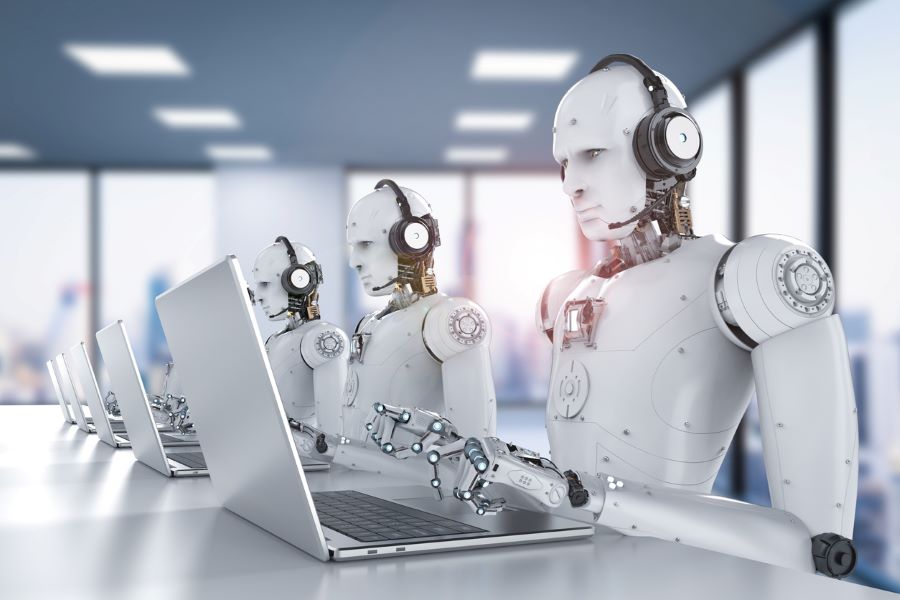
The question hangs in the air, a silent undercurrent in budget meetings and strategic planning sessions across industries: will we hire AI before humans? It’s no longer a futuristic thought experiment; the proliferation of sophisticated artificial intelligence is forcing organizations to confront this very possibility. A new directive, echoing in boardrooms and filtering down to team leads, highlights this shift: before asking for more headcount and resources, teams must demonstrate why they cannot get what they want done using AI. This directive gains even greater weight with the increasing sophistication of AI agents, autonomous systems capable of handling entire workflows. Their ability to independently execute complex tasks raises the distinct possibility of organizations opting for a digital “hire” over a human one, potentially leading to leaner teams focused on higher-level strategic oversight rather than direct task execution.
The Headcount Question in the Age of Automation
This mandate sparks a crucial debate. Is this a forward-thinking commitment to staying ahead of the curve, an intelligent investment in meaningful progress that will ultimately empower human workers? Or does it signal a move towards a leaner workforce, one where the demand for human skills dwindles in the face of increasingly capable machines? The answer, as with most transformative shifts, is likely complex and multifaceted.
On one hand, the directive to explore AI solutions before human hires makes sound business sense. Why add the long-term costs associated with salaries, benefits, and ongoing training if an AI tool can perform specific tasks more efficiently, consistently, and often at a lower cost? For repetitive, data-heavy, or rules-based processes, AI offers compelling advantages. Automating these tasks can free up human employees to focus on higher-level strategic thinking, creative problem-solving, and tasks requiring uniquely human skills like empathy and complex interpersonal communication. In this light, prioritizing AI exploration can be seen as a strategic move to optimize operations, improve productivity, and gain a competitive edge. It’s about working smarter, not necessarily just with more people.
Also, embracing AI can drive innovation. By automating routine tasks, teams can dedicate more time to exploring new ideas, developing novel solutions, and ultimately pushing the boundaries of what’s possible. Investing in AI can also signal a commitment to technological advancement, attracting talent who are eager to work with cutting-edge tools and contribute to a future-forward organization.
However, the directive also raises legitimate concerns about the future of human employment. If the primary lens for resource allocation becomes “can AI do this?”, what happens to the demand for human workers? While AI excels in specific areas, it currently lacks the nuanced understanding, adaptability, and emotional intelligence that are crucial in many roles. A workforce overly reliant on AI risks losing the creativity, critical thinking, and human connection that drive true innovation and customer satisfaction.
Moreover, the implementation of AI is not without its own set of challenges and costs. Initial investment in AI infrastructure, software, and specialized personnel can be significant. Ongoing maintenance, updates, and the ethical considerations surrounding AI deployment also need careful consideration. Simply assuming AI is a cheaper and easier solution than hiring humans can be a short-sighted approach if these factors are not adequately addressed.
Finding Equilibrium in the Human-AI Workforce Revolution
The crucial question then becomes: how do organizations strike the right balance? The directive to consider AI first shouldn’t be interpreted as a wholesale replacement of human capital. Instead, it should serve as a catalyst for a more thoughtful and strategic approach to workforce planning. It necessitates a deep understanding of the specific tasks and skills required, a realistic assessment of AI capabilities, and a clear vision for how humans and AI can best collaborate.
The integration of increasingly sophisticated AI agents further amplifies this consideration. Their ability to autonomously manage complex workflows raises the prospect of organizations leaning towards these digital workers for entire processes, potentially impacting team sizes. However, the more likely outcome is a significant shift in human roles towards oversight, strategy, innovation, and tasks requiring uniquely human skills, alongside the emergence of new roles focused on managing and optimizing these AI colleagues.
Thoughtful Implementation is the Key
The future of work likely lies in a symbiotic relationship between humans and AI. By strategically deploying AI, including autonomous agents, to augment human capabilities and automate routine tasks, organizations can create more efficient, innovative, and ultimately more human-centric workplaces. The directive to explore AI before hiring shouldn’t be seen as a threat to human employment but rather as an opportunity to redefine roles, empower employees to focus on higher-value activities, and build a workforce that is truly fit for the challenges and opportunities of the AI era. The key lies in a thoughtful and ethical implementation, ensuring that the pursuit of technological advancement doesn’t come at the cost of human potential and the invaluable contributions that only people can provide.
Related post: FOBO – Fear Of Being Obsolete in the Age of AI

